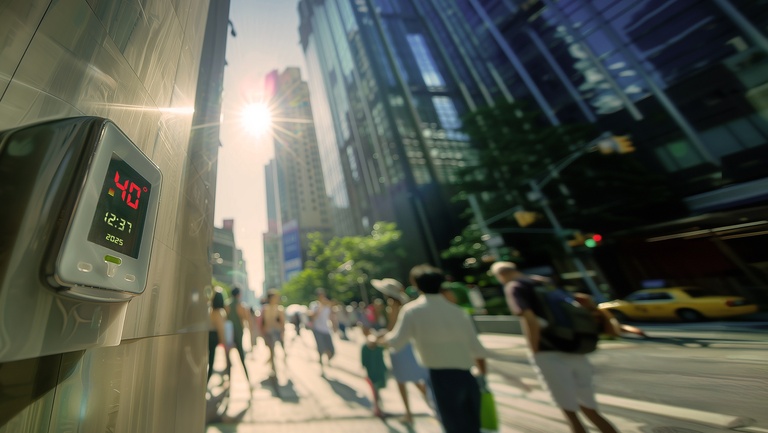Summer has hardly started, but one heatwave is already being followed by another. Weather forecasters predict that Europe will again face an extremely hot summer, with record temperatures of up to 40 degrees. 2024 was already the hottest year on record in Europe1. This especially affects the densely built inner cities which heat up quickly because of the prevalence of sealed ground surfaces and the lack of shade. The relatively few areas of urban vegetation are not sufficient to regulate the heat – which means that the heat simply accumulates. “In what is referred to as ‘tropical nights’, when temperatures do not fall below 20 degrees and urban heat islands develop, even night-time ventilation hardly provides any relief from the heat. To retain comfortable temperatures in bedrooms and living rooms it is therefore crucial to use passive cooling strategies such as exterior shading, vegetated façades, green roofs and building materials which offer thermal storage,“ explains Gregor Grassl, Associate Partner and Head of Green Urban Development at the consulting firm Drees & Sommer. At national level too, the focus is on climate change: On May 15, 2025, the Federal Ministry for the Environment installed a new subsidy package for cities and local communities in order to compensate for the often high costs of such municipal measures.
Scorching hot roads and paving, stuffy air and oppressive heat. Long gone are the pleasant summer days in big cities and urban open spaces. The summer has now become a time of great stress. Climate change and extreme temperatures have spoiled the urban climate and have a negative effect on the quality of city life. But the situation is not completely hopeless. Cities and local communities can take systematic steps to reduce the heat load in urban areas and to strengthen their resilience in face of the consequences of the climate crisis. How measures can be effectively implemented can be seen, for example, in the cities of Düren, Dormagen and Rastatt. Drees & Sommer has advised them on how to adapt to extreme weather events and sustainable urban design. On the basis of the expertise gained in these projects and other climate adaptation projects, Drees & Sommer’s urban development specialists have defined recommendations for combating urban heat. Find out what these are in our press release.
